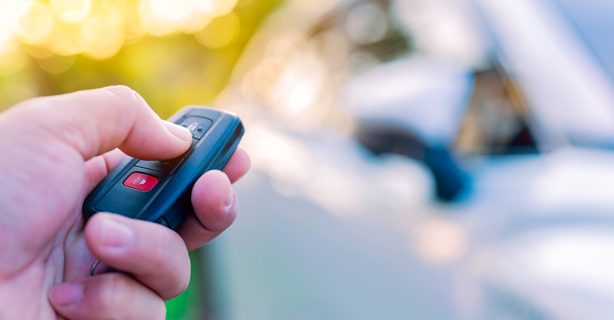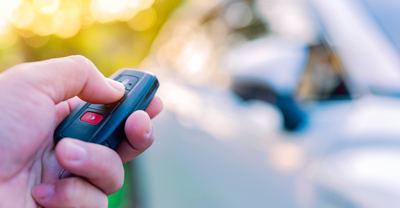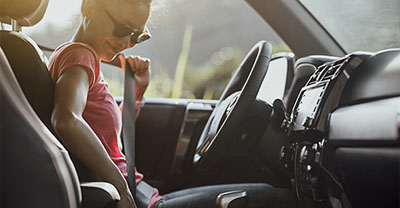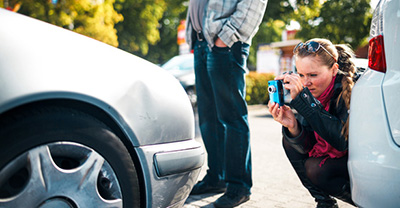Car theft prevention tips: How to keep your vehicle safe


0 min. read
Imagine stepping out of your home or office only to find your car is missing from its parking spot. The harsh reality of vehicle theft is a nightmare that many people have experienced, and the numbers are on the rise.
The National Insurance Crime Bureau (NICB) reveals more than 1 million vehicles were stolen in the U.S. in 2022, marking a 7% rise from the previous year and exceeding 1 million car thefts for the first time since 2008*. These figures drive home why it’s more important than ever to be proactive about protecting your vehicle. Buckle up and discover how to shield your valuable vehicle from car thieves.
Outsmart car thieves: Proactive tips to keep your vehicle secure
According to the FBI, motor vehicle theft accounted for nearly $7.5 billion in losses in 2020 alone, with an average dollar loss per stolen vehicle nearly reaching $9,000*. The good news is there are steps you can take to help protect yourself from becoming part of these staggering statistics.

Always lock your doors and windows
You may think it goes without saying, but a surprising number of car thefts can still be attributed to unlocked doors and windows. Police in one Georgia town reported that 90% of car break-ins happened to unlocked vehicles*.
You should also never leave your vehicle running and unattended, even if you’re just stepping away for a minute. The only thing more inviting to a thief than an unattended and unlocked car with the key inside is an unlocked, unattended car that is running.
Park in well-lit, secure areas
Thieves are less likely to target cars in locations where they can be easily seen or caught. Make it a point to always park in areas that are illuminated by street lights. If possible, choose locations with video surveillance.
Park inside a garage
Parking your car in a garage is one of the simplest ways to prevent car theft. After all, it’s difficult for thieves to steal what they can’t access!
A Garage Living survey of 1,500 North Americans shows that 20% couldn’t park in their garages, leaving their vehicles at a higher risk of theft and vandalism when parked on the street or driveway*. Fortunately, restoring your garage’s primary function–parking–isn’t as daunting as it may seem. Here’s how to regain your garage’s interior space:
Declutter and get rid of unnecessary items.
Consult a garage design specialist to optimize your garage storage capacity.
Equip your garage with efficient storage solutions, including:
Slatwall
Overhead racks
Cabinets
With the right design, your garage can accommodate indoor parking and ample home storage. You can even create extra space for hobbies, such as working out or art.
Once you’ve gotten your garage in shape to fit your car, make sure you don't leave the garage door open. By keeping the door closed, you protect your vehicle and other belongings.
More ways to keep your garage safe include:
Improve the outdoor lighting surrounding your garage for better visibility.
Regularly trim shrubs and hedges near the garage (overgrown plants can provide cover for thieves).
Replace outdated garage door openers with newer, more secure models.
Prevent direct visibility into the garage through windows (use frosted glass or window coverings).
Set up a dependable garage security system.
Install surveillance cameras both outside your home and inside the garage.

Use a steering wheel lock
A steering wheel lock is a simple and effective way to deter car thieves. These devices make it difficult for anyone to drive away with your vehicle without first removing the lock. Visible anti-theft devices send a clear message to potential thieves that stealing your car will be a noisy, challenging endeavor. In most cases, this will deter them from even attempting to take your vehicle. They'll likely move on to an easier target.
Install an alarm system
A loud car alarm can draw attention to a thief in action and stop them from attempting to steal your vehicle. Make sure the alarm system is professionally installed and prominently displays a sticker to warn potential thieves.
Use a vehicle tracking system
It’s easier than ever to track your car these days, thanks to GPS devices like Apple’s AirTag. There is also a wide range of systems that use GPS technology to track your car’s location and notify law enforcement agencies in real time, increasing the odds of recovering your car.
Keep your valuables out of sight
Never leave valuables like laptops, smartphones, or bags visible in your vehicle. If thieves see these items, they may be more inclined to break into your car. Again, try not to be an easy target for thieves.
What to do if your vehicle is stolen
Experiencing car theft is a distressing and disorienting event. However, knowing the proper steps to take in the aftermath can help you regain control and minimize the impact of the theft.
1. Confirm the theft
Before you assume your car has been stolen, ensure it wasn’t towed or relocated due to parking violations or other reasons. Check with local authorities, nearby businesses, or towing companies to confirm your car hasn’t been towed or moved.
2. Report the theft to the police
Once you’ve verified your car has indeed been stolen, immediately contact the police and file a theft report. Provide the police with detailed information about your vehicle, including:
Make
Model
Color
License plate number
Vehicle identification number (VIN)
The sooner you report the theft, the higher the chances are of recovering your vehicle.
3. Notify your insurance company
After filing a police report, contact your auto insurance provider to report the theft. Inform them of the police report number and provide any additional information they may require. Reporting the theft promptly is crucial, as insurance companies often have deadlines for filing claims related to stolen vehicles.
4. Contact your lender
If your car is financed or leased, notify your lender about the theft. They may have specific requirements or procedures in place for handling stolen vehicles, so it’s essential to keep them informed.
5. Monitor financial accounts
Thieves may have access to your personal belongings and documents left in the stolen car. Keep a close eye on your financial accounts and credit reports for any signs of fraudulent activity. If you notice any unauthorized transactions, alert your bank or credit card company immediately.
6. Replace your license, registration, and other documents
Your stolen car may have contained important documents such as your driver’s license, registration, and insurance cards. Contact your local Department of Motor Vehicles (DMV) and insurance company to report the stolen items and request replacements.
7. Cooperate with the insurance claims process
Work closely with your insurance company during the claims process. Provide them all the necessary documentation and information, such as the police report, proof of ownership, and any receipts for recent upgrades or repairs.
Understanding comprehensive insurance coverage
Comprehensive coverage is an important part of your auto insurance policy that can help protect you when your vehicle is stolen. It can cover damages to your car from incidents other than collisions, including theft, vandalism, fire, and many natural disasters.
Although comprehensive coverage isn't required, it’s highly recommended for car owners who want to protect their investments. If your car is stolen and you have comprehensive coverage, your insurance company can reimburse you for the actual cash value of your vehicle minus your deductible. Keep in mind this coverage doesn’t extend to personal belongings left inside the car.
Other car insurance coverages that can help protect you following other types of incidents include:
Liability coverage:

Liability coverage is mandatory in most states and covers the expenses of the other driver if you’re at fault in an accident. However, it doesn’t cover your own vehicle’s damages or theft.
Collision coverage:

Collision coverage pays for damages to your vehicle resulting from a collision with another car or object, regardless of who’s at fault. But be warned, it doesn’t cover damages from theft.
Uninsured/underinsured motorist coverage:

Uninsured/underinsured motorist coverage can help protect you in case you’re in an accident with an at-fault driver who doesn’t have sufficient insurance or any insurance at all. It doesn’t cover theft.
Get Dairyland® comprehensive auto insurance

Don’t leave your vehicle’s safety to chance. Secure your investment with Dairyland comprehensive auto insurance. With a commitment to exceptional customer service, prompt claims handling, and reliable protection, we can help ensure you can drive with confidence, knowing you’re prepared for any situation.
The general information in this blog is for informational or entertainment purposes only. View our blog disclaimer.
*Data accuracy is subject to this article's publication date.










